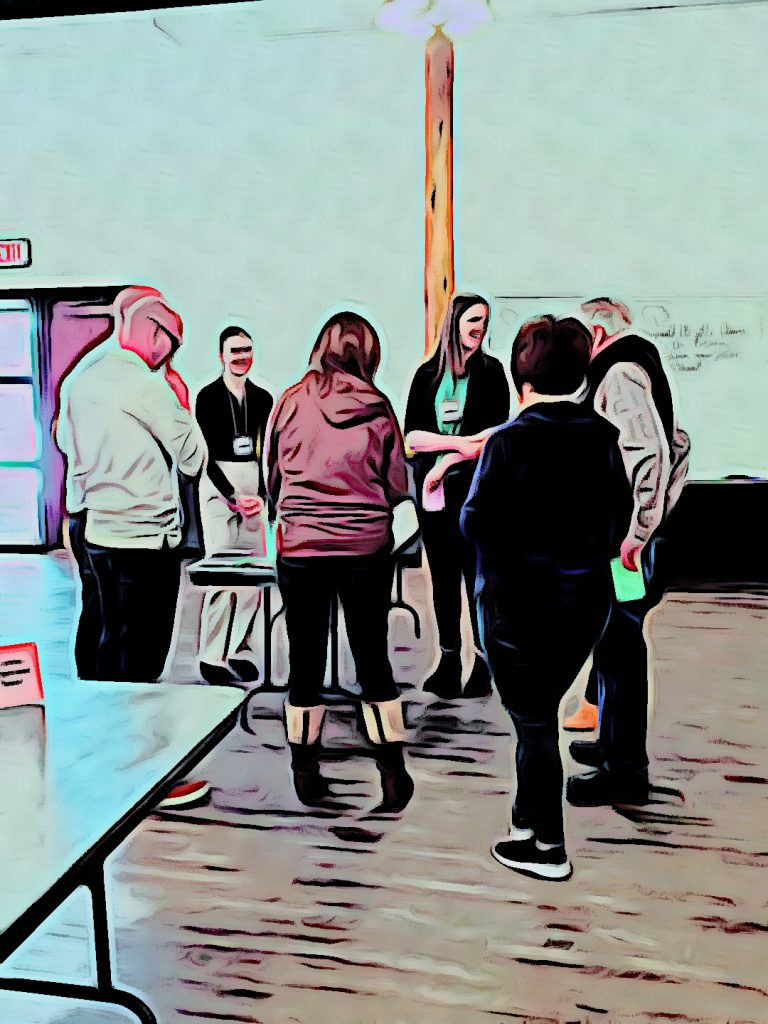The success of a session can hinge on one moment of facilitation. A facilitator recognizes these moments and responds appropriately for the benefit of the group. This is the 4th post in my series of Facilitation Moments that shifted a session.

I experienced an impactful facilitation moment early in my career. When I was 18 years old, I had a summer job as an assistant to 4-H Club Program Specialists. We hosted a session with 100 4-H leaders to talk about program changes. One of my supervisors was presenting at a podium and had been talking for about 15 minutes. My second supervisor was sitting next to me and she suddenly whispered, “This has to change. We need to let these people talk.” She went to the front of the room and subtly signaled her colleague. Then, with her direction, in three minutes the room was buzzing with noise and excitement as the leaders talked in small groups of four.
The power of that moment has always stayed with me.
Why then would I suggest that at times a small group discussion is not the method to use?
A recent MOMENT related to small groups occurred last month ¾ of the way through a two-day session with an advisory group to recommend actions about an issue. We used a Card Consensus method (affinity clustering) to generate ideas and cluster them into themes. The most efficient use of the remaining time would been small groups producing recommended actions for the themes, yet I knew I needed to ask the group what they thought. They all said that they wanted to stay in the plenary group of 12 members. They each felt they had information and ideas from diverse perspectives to develop the recommendation and everyone needed to hear them. They also said we had developed a strong trust within the group and they felt safe to give ideas directly to everyone.
At that moment, I knew it was important to honour their wishes. I negotiated a time limit for discussing each theme and how long we could go past the scheduled end time, and away we went in the large group. I supplemented the plenary group discussion with quick pair and share, and walk and talk activities to change the pace and ensure everyone spoke. We completed the actions within the agreed-upon time.
This decision in the moment to not use small groups may seem obvious and not impactful. Yet, I could have insisted that small groups were a better method and use of time. In one moment, I could have lost the trust of the group by not listening to their wisdom.
I believe strongly in the value of small group discussions in meetings, workshops, and sessions. Most of my design includes multiple opportunities for participants to converse in pairs, trios, 4s, and occasionally six. Yet, at times, a large group discussion can be the best approach.
